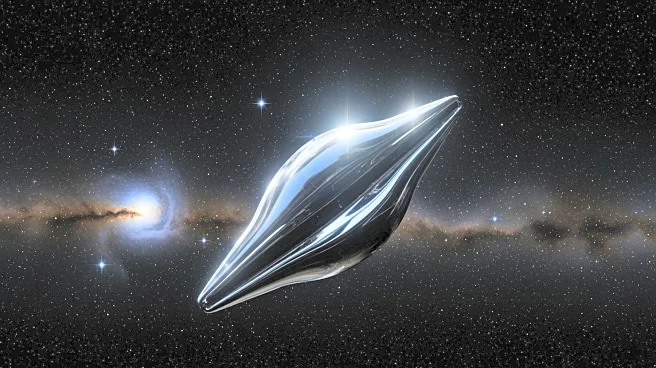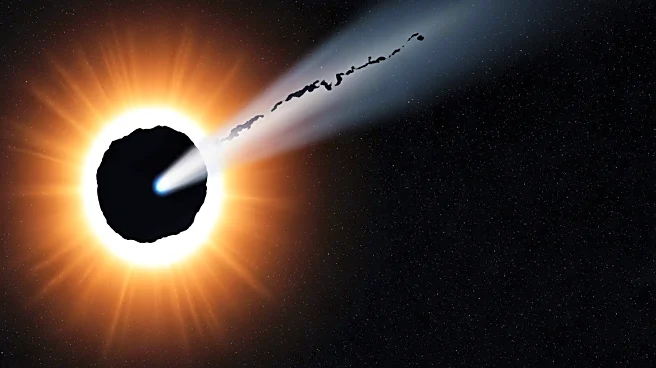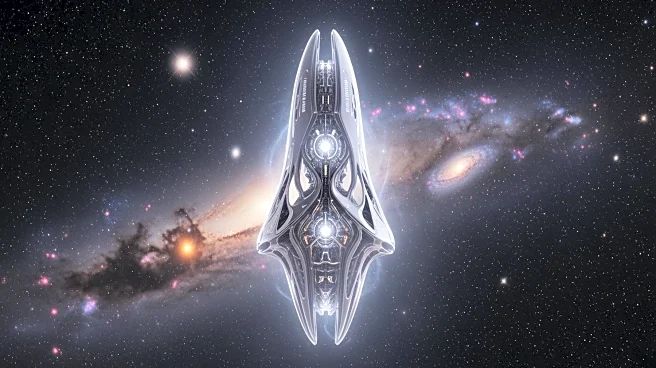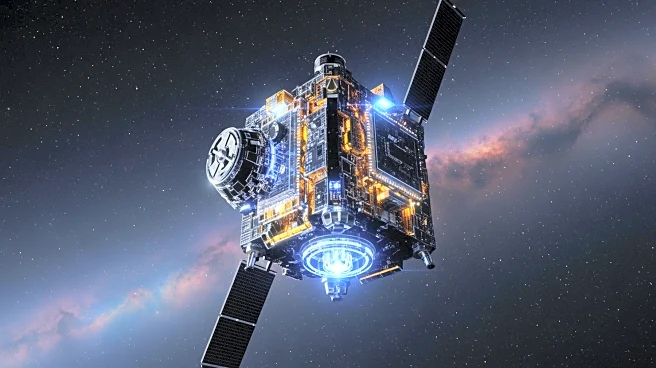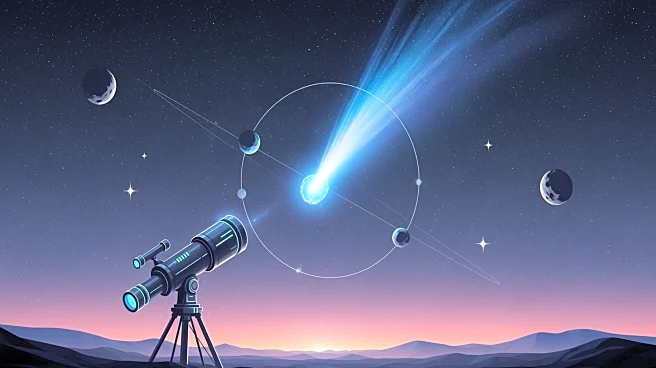What's Happening?
The interstellar object 3I/ATLAS, detected in 2025, is sparking debate among scientists regarding its origin. Unlike typical comets or asteroids, 3I/ATLAS exhibits unusual characteristics, such as a trajectory
closely aligned with the solar system's ecliptic plane and a composition rich in nickel but low in iron. These anomalies have led some researchers to speculate about the possibility of an artificial origin. The object was discovered by the Vera C. Rubin Observatory and is being closely monitored as it passes through the inner solar system.
Why It's Important?
The study of 3I/ATLAS could significantly impact our understanding of interstellar objects and their origins. If the object is found to have an artificial origin, it could suggest the presence of extraterrestrial technology, challenging current scientific paradigms. Even if it is natural, its unique properties could provide insights into the diversity of interstellar objects and the conditions of their formation. This could influence future space exploration missions and the search for extraterrestrial life.
What's Next?
Further observations are planned as 3I/ATLAS approaches Mars and Jupiter, which may provide more data on its composition and trajectory. The European Space Agency's Comet Interceptor mission is being prepared to potentially study such interstellar objects in the future. The scientific community remains divided, with some advocating for open consideration of all hypotheses, including artificial origins, while others remain skeptical.
Beyond the Headlines
The debate over 3I/ATLAS highlights broader issues in the scientific community, such as the willingness to entertain unconventional ideas and the potential reputational risks for scientists who do so. The case also underscores the importance of technological advancements in detecting and studying interstellar objects, which could lead to groundbreaking discoveries about our universe.
